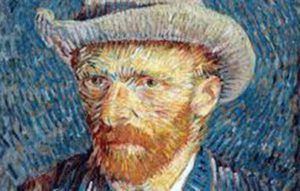The museum now owns 21 works by women—out of more than 2,000.
London’s National Gallery has acquired a rare and recently rediscovered self-portrait by Artemisia Gentileschi, Self Portrait as Saint Catherine of Alexandria (circa 1615-17) for £3.6 million ($4.08 million) just a few months after it was sold at a Paris auction.
The painting is only the 21st artwork by a female artist to enter the gallery’s collection of more than 2,300 works.
The acquisition “realizes a long-held dream of increasing the National Gallery’s collection of paintings by important women artists,” said a statement from Hannah Rothschild, who in 2015 became the first woman to chair the National Gallery’s board of trustees. “Gentileschi was a pioneer, a master storyteller, and one of the most progressive and expressive painters of the period.”
The painting had been owned by the same French family for centuries, but its authorship had been obscured over the years. It was sold at the Paris auction house Christophe Joron-Derem this past December for €1.85 million ($2.9 million), far above the €350,000 estimate. It is the highest price ever realized at auction for the artist, according to the artnet Price Database, but far higher prices have been paid privately, such as when the Getty paid $30.5 million for a Gentileschi painting in early 2016.
The London dealer who acquired it at the sale then sold it to the National Gallery. The museum’s curator of baroque art, Letizia Treves, said in a statement that the museum had long wanted to acquire a painting by Gentileschi. “The fact that this is a self-portrait adds enormously to the painting’s appeal and art historical significance,” she said.
The artist had a dramatic life, overcoming enormous personal and professional challenges as a result of her gender. She was raped by painter Agostino Tassi and then subjected to intense questioning and physical torture during the seven-month trial that followed. Though her skill as an artist has often been overshadowed by the details of her life, she is now considered one of the most important painters of her generation.
Of the approximately 60 paintings attributed to Gentileschi, many focus on a strong female heroine, and many have been interpreted as autobiographical. The self-portrait as Saint Catherine shows a female figure turned toward the viewer. “A halo is visible just above her head, indicating that she is a saint. Her left hand rests on the top of a broken spiked wheel,” according to a statement from the museum. The wheel was associated with the saint, who was martyred in the 4th century after being sentenced to death by Emperor Maxentius. She was bound to revolving wheels studded with iron spikes and nails, and though she managed to escape, she was later beheaded.
There are only two other known Gentileschi easel paintings in the UK: Susannah and the Elders, which is in the Burghley House Collection in Stamford, and Self-Portrait as an Allegory of Painting (La Pittura) in the Royal Collection.
Self Portrait as Saint Catherine of Alexandria will undergo restoration over the next six months and go on view at the gallery in early 2019.
www.artnet.com




